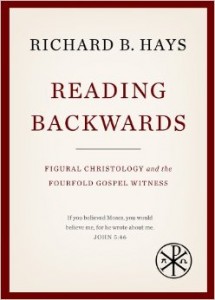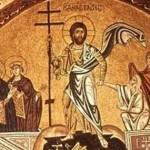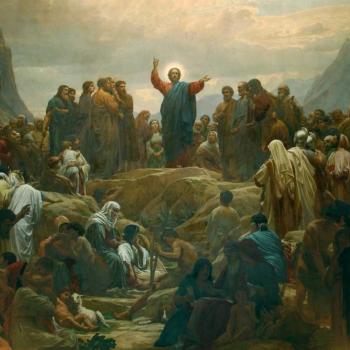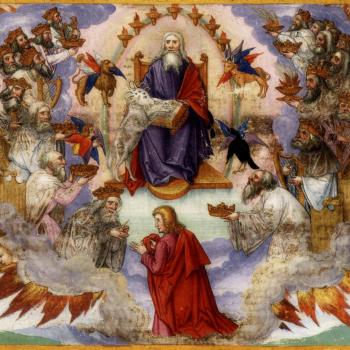 In his short, punchy book, Reading Backwards, Richard Hays looks at how each of the four Gospels interpret the Old Testament in light of Jesus. In the last chapter, “Retrospective Reading,” he offers ten ways the Gospels teach us “how to receive and retell the scriptural story” (pp. 104-109). Here’s a summary of each:
In his short, punchy book, Reading Backwards, Richard Hays looks at how each of the four Gospels interpret the Old Testament in light of Jesus. In the last chapter, “Retrospective Reading,” he offers ten ways the Gospels teach us “how to receive and retell the scriptural story” (pp. 104-109). Here’s a summary of each:
1. “A Gospel-shaped hermeneutic necessarily entails reading backwards, reinterpreting Israel’s Scripture in light of the story of Jesus. … Scripture was a complex body of texts given to the community by God, who had scripted the whole biblical drama in a way that it had multiple senses. Some of these senses are hidden [and not illuminated until Jesus’s arrival], so that they come into focus only retrospectively.”
2. “More specifically, Scripture is to be reinterpreted in light of the cross and resurrection. … [T]he Evangelists were convinced that the events of Jesus’ life and death and resurrection were in fact revelatory: they disclosed the key to understanding all that had gone before. … After the resurrection, the community of Jesus’ followers returns to reread Scripture under the guidance of the Spirit and experiences, again and again, an “Aha!” reaction.”
3. “Similarly, the Evangelists’ diverse imaginative uses and transformation of the OT texts summons us also to a conversion of the imagination. … [I]f we learn from them how to read, we will approach the reading of Scripture with a heightened awareness of story, metaphor, prefiguration, allusion, echo, reversal, and irony.”
4. “For the Evangelists, Israel’s Scripture told the true story of the world. Scripture was not merely a repository of ancient writings containing important laws or ideas or images; rather, it traced out a coherent story line that stretched from creation, through the election of Israel, to the telos of God’s redemption of the world.”
5. “It is important to emphasize that the Evangelists’ retrospective reinterpretation of Israel’s story is in no sense a negation or rejection of that story. … The canonical Evangelists understand themselves to be standing within the still-unfolding narrative trajectory of Israel’s covenant relationship with the God of Abraham, Isaac, and Jacob.”
6. “The Gospel writers approach Scripture as a unified whole, but their reading of it is not undifferentiated. Each of the Evangelists seems to operate with a de facto canon within the canon, giving more attention to some parts of Scripture than to others.”
7. “[T]he Scripture employed by the Evangelists is, on the whole, the Greek Bible (LXX). [Though there are a few exceptions], it appears that the functional Bible for the communities in and for which the Gospels were composed was a Greek translation. This has potentially interesting implications for how we think about what we mean when we speak about the Christian Bible.”
8. “Because the Evangelists are so deeply immersed in Israel’s Scripture, their references and allusions to it … nudge the discerning reader to recognize and recover the context from which the intertextual references are drawn. … Such evocative hints make a serious demand on the reader-competence of the Gospel’s audience, but they also offer serious hermeneutical rewards for those with ears to hear.”
9. “The more deeply we probe the Jewish and OT roots of the Gospel narratives, the more clearly we see that each of the four Evangelists, in their diverse portrayals, identifies Jesus as the embodiment of the God of Israel. … [Contrary to the popular opinion that only John has a high Christology], all four canonical Evangelists would say Amen: the Gospels narrate the story of how the God of Israel was embodied in Jesus.”
10. “Finally, the Evangelists consistently approach Scripture with the presupposition that the God found in the stories of the OT is living and active. … The one Lord confessed in Israel’s Shema is the same God actively at work in the death and resurrection of Jesus Christ. Apart from the truth of that claim, any talk of the unity of the OT and the NT is simply nonsense.”












